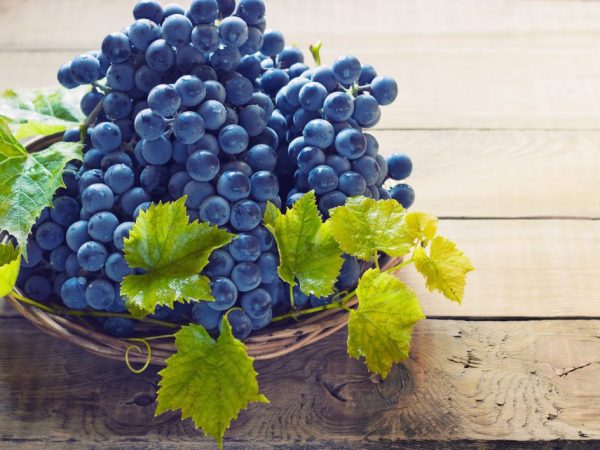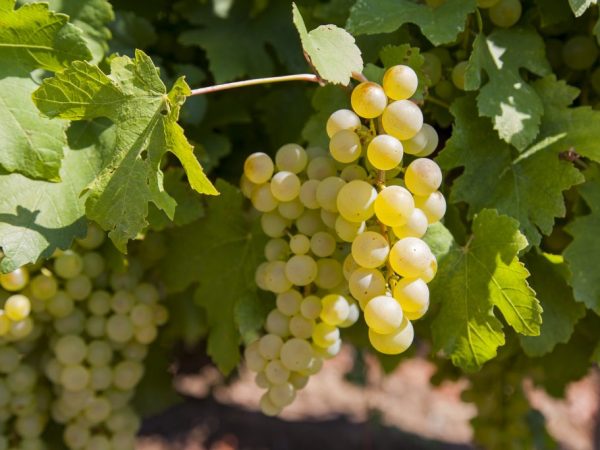Features of seedless grapes
To establish home production of dried fruit, the grower will need to plant seedless grapes on his site. Today there are a large number of varieties that take root well not only in the south, but also in the middle zone of the country.

Features of seedless grapes
Features of seedless grapes
Most useful seedless crops are early ripening. Such varieties are hardy and unpretentious to care for. Their main feature is juicy and tasty pulp without hard seeds. It is more pleasant to consume such berries fresh.
The fruits are also suitable for harvesting dried fruits. The raisins are tender, soft and sweet.
Not all seedless grape varieties are suitable for wine production. Only some hybrids are used.
Popular varieties
Seedless grape varieties are varied. You can pick up both green or red, and amber, pink or black types of berries with different ripening periods. Most of them are frost-resistant and tolerate frosts from -22 ° C to -30 ° C.
The most common crop, characterized by the absence of seeds, is raisins, but besides it there are a large number of varieties that are not inferior in characteristics and features of the use of fruits:
- Jupiter. This is an early frost-hardy culture that tolerates frosts up to 27 ° C. The berries are large, red, with a bluish tinge, juicy and sweet. They are used to make wine and dried fruits.
- Mars. Medium ripening dark grapes. The berries are large, round. purple. With ripening, black appears. These fruits are universal. Suitable both for fresh consumption and for drying, wine and juices.
- Neptune. Early, it is distinguished by good immunity to garden diseases. The fruits are pink in color, with ripening they turn red.
- Himrod. It has an average ripening period in the middle climatic zone. The berries are small, up to 3 g each. The color is green, with ripening it becomes yellow. Also, this grape is suitable for making white wine.
- Marquis. It has an average ripening period. The culture is frost-resistant. The berries are large, green in color, turn yellow with ripening, have a sweet taste.
- Kenadis. Refers to the pink type of culture. With ripening, the berries turn red. It is the most hardy of all seedless grape varieties. It tolerates frosts down to -30 ° С. Has a sweet taste.
- Kesha. This is an early culture. In the climatic conditions of central Russia, it ripens in 115-120 days. Berries are amber, medium, weighing up to 5 g each. The average weight of the brush is 500 g. The berries are sweet and juicy, with a nutmeg flavor. There is no sourness.
Varieties of raisins

Kishmish is the most popular type
The most common seedless grape in the world is raisins. This is a whole group of hybrid forms of culture, characterized by the absence of seeds in the berries, as well as easy care.
The variety is named so because of the shape of the berries.Translated from the Turkic word "kish" means "pressure, compression". That is, the full name is "compressed grapes".
Hybrid forms of white, red, pink and even black raisins have oval oblong berries. The most popular ones are:
- Radiant. The berry with this name is the most popular raisin in the world. The culture is frost-resistant, has large and beautiful clusters of pale pink color. The berries are sweet and juicy, with a nutmeg aroma.
- Zaporozhye. The culture is resistant to frost and disease. The berries are oval, purple in color. They are medium in size. They are distinguished by sweetness and juiciness.
- Kishmish 342. It is also called Hungarian. Early, ripens in 115 days. The bunches are small, the berries are small. The fruits are purple in color. The variety is immune to cracking and is not damaged by wasps.
- Veles. One of the representatives of pink early raisins. The bunches are large, often weighing 2 kg. The berries are large, pink, sweet and fleshy. There is a nutmeg flavor.
- Attica. One of the best types of black culture. It is distinguished by large bunches and juicy sweet berries. It ripens in 110 days, ripe fruits are purple in color, have a thin skin and a sweet, cherry-like taste.
- Long-awaited. This is one of the most famous representatives of hybrid forms. It is difficult to grow. Taking into account all the features of care, the culture will thank you with delicious sweet berries. The total weight of the hand often exceeds 1 kg.
Reproduction of culture
The grape crop is propagated both by seeds and vegetatively.
There are not many seedless varieties of culture. Even raisins still have seeds, but they are small and underdeveloped, so they do not taste.
Seed propagation is an impossible procedure. This can only be done in a vegetative way: by cuttings or shoots.
Calorie content
The calorie content of ordinary grape berries is 65-80 kcal. It is recommended to limit the consumption of a white or green crop. White berries are healthier and contain fewer calories - 45-50 kcal.
Both large and small, black, white or pink fruit, which does not have seeds in the pulp, is higher in terms of calorie content than fruits of a culture with seeds. Green berries contain up to 70 kcal, black - up to 75 kcal, and red - up to 65 kcal. When dieting, you should also avoid consuming a dried product. Its caloric content often exceeds 200 kcal per 100 g.
Conclusion
There are a large number of grape varieties that lack seeds in their pulp. Their main disadvantage is the impossibility of propagation of the culture by seeds. Only vegetative propagation will do, which will preserve genetic characteristics.

